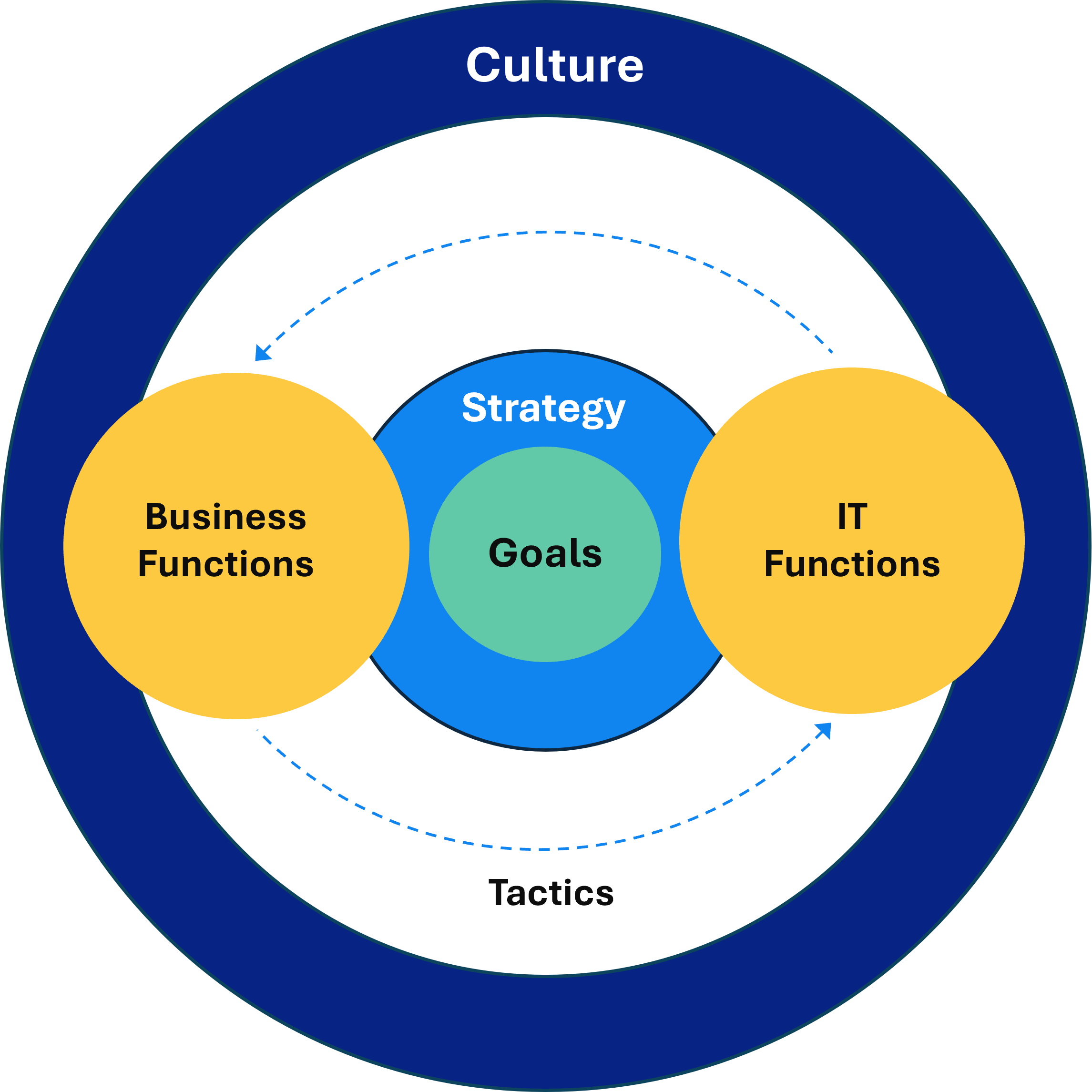Written by: Mike Frick, MBA, JD, Senior Management Consultant
Strategic Planning. Most agencies do it. Some agencies might even be required by laws, rules, or state regulations to have a strategic plan.
Developing a strategic plan isn’t just about creating a document that checks a box. Strategy is the identification of high-level methods to support how you intend to accomplish your organizational goals. It’s your navigational system, and your strategic plan should map out your journey. Without it, you are more likely to stray off course, lose direction, drive into trouble, get lost, lose time, or end up at destinations where you don’t want to be. Developing and executing strategy should be among your most important business processes!
Strategy Thought Leadership
At ISF, we view strategy holistically. We not only want to help you create your strategic plan, but we also want to help maximize the likelihood that you will be able to successfully implement and execute your strategy. We want you to succeed! Our approach involves identifying, assessing, and addressing roadblocks that can derail the success and effectiveness of your organizational strategy.
Public Sector Strategy Roadblocks

Developing and executing effective strategies in state government presents unique challenges. This article will identify some of the most common roadblocks that many agencies neglect or fail to address in their strategic planning efforts. Becoming aware of these “under the radar” roadblocks will enable your agency or organization to find detours or make course adjustments that keep you moving towards your strategic objectives.
Recognizing and understanding some of the most common roadblocks is a critical first step. Although often imperceptible or hidden, they can be spotted if you know what to look for.


Much is written about the importance of aligning business needs with technology, and the rapid pace of change in the technology sector has only served to make such alignment more of a challenge in the public sector. In the private sector, businesses must adapt or perish. Those that cannot adapt are replaced by more agile competitors or new business models. In the public sector, the same competitive market pressures do not dictate survival. Public agencies with outdated technology and antiquated service models must continue to the best of their ability to deliver government services. As a result, IT often becomes “the tail that wags the dog.” Systems not only affect the efficiency and effectiveness of agency operations, but the limitations of systems and system providers often dictate the nature and quality of government services.
Recognizing factors that frequently drive misalignment of business and IT functions is essential to mitigating the impacts of those factors. While there may be others, the most common factors resulting in misalignment with strategic objectives that I’ve encountered include:
- Service provider contracts in which interests of the parties aren’t mutually aligned
- Budget constraints / “appropriations” process
- Frequent executive turnover at the agency level
- Unintended consequences of new or amended legislation
Although concerns about misalignment between business and technology functions are rather well documented, the same challenges can also occur between business units. This risk is greater in heavily bureaucratic, top-down organizations. Deep verticals (“silos”) inhibit horizontal collaboration between business units that is necessary for state agencies to adapt to rapid changes in the consumer marketplace that impact stakeholder expectations.
A final point about alignment. If your assessment of strategic alignment does not include a comprehensive evaluation of workplace culture, then your assessment is incomplete. And that brings us to our next roadblock.

Organizational culture significantly impacts business strategy. Shared values, beliefs, and behaviors play a crucial role in shaping strategic planning. A culture that emphasizes innovation, risk-taking, and collaboration can drive the creation of ambitious and creative strategy. And a culture that values transparency and accountability can enhance the execution of strategic objectives and facilitate a smoother implementation by ensuring that staff are fully committed to achieving desired outcomes.

A dysfunctional or even toxic workplace culture does not preclude organizational success for a time, but it almost always inhibits the ability of an organization to maximize its potential. As a general rule, it is unsustainable over the long-term. Culture matters. The likelihood of consistently achieving your strategic goals will be exponentially greater if organizational culture and strategy are aligned.
As illustrated in the figure below, executive leadership must always understand and leverage organizational culture to develop and implement effective strategies that will drive long-term success.
Strategic Alignment Illustrated


Most agencies do not regularly assess enterprise risk. Fewer still address known or foreseeable enterprise risks in their strategic planning efforts.

Enterprise risk assessment is a comprehensive process that identifies, analyzes, and evaluates potential risks that could impact an organization’s ability to achieve its objectives. It is a critical component of enterprise risk management (ERM) and is also essential to effective strategic planning. It involves a structured, comprehensive approach to understanding and managing risks. By integrating enterprise risk assessment into the strategic planning process, agencies can make more informed decisions, allocate resources more effectively, and increase the likelihood of long-term success.


Institutional biases are problematic because they aren’t generally recognized as enterprise risks but can ultimately sink an organization from the inside. Status quo bias is a common type of institutional bias. Although not a government entity, SEARS could serve as a well-known case study of the devastating impact status quo bias can have on even the largest of companies. Once a giant in the retail industry, SEARS was slow to recognize and adapt to changes in the retail marketplace. Throughout the company, there was a collective belief (“groupthink”) that SEARS was timeless; that things which worked for them in the past would always work for them. Clinging to the status quo all but assured the company’s eventual demise.
Like status quo bias, confirmation bias is another invisible strategy roadblock. Confirmation bias involves the tendency to process information based on an existing perspective or vantage point. Although unintentional, what we look for will often limit what we are able to see. Information and data are easily viewed and processed through a frame of reference that supports existing business processes. Conflicting or inconsistent information, though vital, can become lost or obscured as the result of confirmation bias.

Having a strategic plan usually isn’t an issue. Most agencies and government entities have a strategic plan of some sort at some level. But how often are those plans reviewed, evaluated or revised? When was the last time that someone in your agency opened it from your shared drive and actually spent any meaningful time in the document? Is review, evaluation, and revision of your strategic plan a scheduled activity?

Perhaps the best metaphor to describe the “Too Busy” roadblock was shared more than 30 years ago by renowned business author, Stephen R. Covey. In his bestselling book, The 7 Habits of Highly Effective People, Covey’s 7th habit refers to “Sharpening the Saw.” The tendency to be too busy to stop sawing is relatable to most of us, but not making time to keep the saw sharpened is ineffective, inefficient, and potentially harmful.
Overcoming Obstacles Begins with Awareness

Strategic planning should not be viewed as a “make work” exercise that your staff gets pulled into every five years or so. Developing and executing effective strategies is an ongoing cycle. Being able to anticipate and navigate around roadblocks will help you avoid getting stuck and enable you to find detours or change course. As with addressing almost any challenge, there must be an awareness that the challenge exists. Awareness of the roadblocks discussed above will allow you and your organization to systematically address them with focus in your strategic planning process.
The ISF Approach and Advantage
Our approach to strategy consulting goes beyond a traditional deliverable model. We always strive to provide services that deliver impact! We will never be satisfied with checking boxes, nor will we hand off a strategic plan that we believe a client is unable to implement.
While there is no simple solution for identifying and addressing all potential roadblocks, 360-degree feedback at an organizational level is essential to strategy. ISF recognizes the necessity of stakeholder engagement from development through implementation. Throughout the strategy process, we understand that identifying and engaging stakeholders is a priority not just in numbers but also in terms of their perceived impact on success. A RACI Matrix or similar tool will often be developed to communicate roles of different stakeholders and stakeholder groups for successful execution of strategic plan elements. Effective facilitation of stakeholder engagement will also align expectations among leadership and staff, create a sense of urgency for new initiatives, and support successful execution. It’s what we do!
Our team includes seasoned experts who have conquered complex business challenges and bring a balance of wisdom, practical experience, and emerging thought to strategy projects.
That’s the value we add. That’s the ISF advantage!
How Are You Solving the Future?